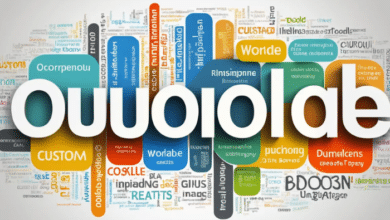My Name Is in Spanish NYT: A Comprehensive Guide

“My Name Is in Spanish NYT” has sparked a conversation surrounding identity, language, and cultural significance. The title itself hints at a broader exploration of names, language translations, and the impact of media coverage—especially from a globally recognized platform like The New York Times (NYT). In this post, we will dive into the various facets of this keyword, examining its meaning, the influence of Spanish in modern culture, and how media publications like the NYT address language diversity and cultural narratives.
In every paragraph of this blog, we will explore the context and relevance of “My Name Is in Spanish NYT” and how it resonates in both linguistic and cultural discussions.
What Does “My Name Is in Spanish NYT” Mean?
The phrase “My Name Is in Spanish NYT” can refer to several different aspects, from translation and cultural adaptation to representation in the media. The New York Times (NYT), being one of the most influential newspapers globally, often features stories that touch on identity, heritage, and the significance of language in shaping a person’s self-perception. “My Name Is in Spanish NYT” could highlight the importance of a name in its original Spanish form, which carries cultural and familial meaning.
For many Spanish-speaking individuals, seeing their name represented correctly in a global publication such as NYT can be a profound moment. This acknowledgment reinforces the idea that language, even in something as simple as a name, is a crucial part of one’s identity.
The Importance of Names in Spanish Culture
When we think of the keyword “My Name Is in Spanish NYT,” it’s essential to understand the cultural weight of names in Spanish-speaking communities. Names often carry deep meanings tied to history, religion, and familial connections. In many Latin American and Spanish cultures, names are not just individual identifiers; they are a connection to lineage, traditions, and ancestry.
“My Name Is in Spanish NYT” can be interpreted as a reflection of the importance of preserving these cultural identities in an increasingly globalized world. When names are translated or altered in non-Spanish-speaking media, much of the cultural significance can be lost. The keyword underscores the importance of preserving the authenticity of one’s name, especially when it appears in prominent media like the New York Times.
The Role of the New York Times in Promoting Language Diversity
The New York Times has been a significant platform for promoting cultural and linguistic diversity. When we consider the keyword “My Name Is in Spanish NYT,” we’re addressing how the NYT treats language representation, especially for minority groups. As a major media outlet, the New York Times holds a responsibility to accurately represent the names and stories of people from various cultures, including Spanish-speaking populations.
The phrase “My Name Is in Spanish NYT” could be seen as an acknowledgment of how the NYT has become a medium through which names in their native languages, particularly Spanish, are represented and respected. This inclusion is a nod to the growing recognition of the Spanish language in global media and the need for accurate cultural representation.
Why Translation Matters: Preserving Identity
Translation can often change the essence of a name or phrase, which is why “My Name Is in Spanish NYT” brings to light the importance of preserving names in their original forms. In the context of translation, particularly in media, names in Spanish carry specific phonetic and cultural meanings that can lose their impact when translated into English or other languages.
For many individuals, having “My Name Is in Spanish NYT” signifies more than just seeing their name in print; it’s about seeing their identity recognized in a respectful manner. Translation errors or anglicization can diminish the personal and cultural significance of a name, which is why publications like the NYT need to be conscious of how they handle non-English names.
Representation in Media: A Step Towards Inclusivity
When discussing “My Name Is in Spanish NYT,” we cannot ignore the broader issue of representation in media. Seeing a name accurately represented in a major publication like the New York Times is a form of validation for many individuals from Spanish-speaking communities. In an era where diversity and inclusivity are paramount, the keyword “My Name Is in Spanish NYT” highlights how essential it is for media platforms to reflect the cultural richness of their audience.
For Spanish speakers, representation in mainstream media can help break down stereotypes and foster a sense of belonging. “My Name Is in Spanish NYT” symbolizes more than a translation—it’s a step towards recognizing the contributions and identities of millions of people whose names are deeply tied to their cultural heritage.
The Global Impact of Spanish as a Language
The rise of the Spanish language in global discourse is undeniable, making the keyword “My Name Is in Spanish NYT” increasingly relevant. With over 460 million native speakers worldwide, Spanish is the second most spoken language by native speakers and has a vast cultural influence. This means that Spanish names and language are more prominent in global media than ever before, including outlets like the New York Times.
“My Name Is in Spanish NYT” represents this shift, where media organizations must adapt to a more linguistically diverse world. It also signifies the increasing visibility of Spanish as a language of influence, not just in Spanish-speaking countries but on the global stage.
Cultural Identity and Language: A Personal Connection
Ultimately, the phrase “My Name Is in Spanish NYT” touches upon the deeply personal connection between cultural identity and language. For many individuals, their name is a cornerstone of their identity. When that name is represented in its original form—especially in a globally recognized publication like the NYT—it reaffirms the significance of language in maintaining one’s heritage.
For those whose first language is Spanish, seeing “My Name Is in Spanish NYT” serves as a reminder that language is more than just a tool for communication—it’s a vessel for preserving cultural history and personal identity. The New York Times, by ensuring accurate representation, plays a role in fostering this connection between language and identity.
Conclusion
In conclusion, “My Name Is in Spanish NYT” represents much more than a simple translation of a name. It speaks to the broader issues of cultural identity, media representation, and the importance of preserving the integrity of a name in its original language. The New York Times, as a global media outlet, holds the power to validate these identities by ensuring that names in Spanish, and other languages, are accurately represented and respected.
Through this blog post, we’ve explored the different dimensions of this keyword and how it resonates in discussions surrounding identity, language, and media. By maintaining linguistic accuracy and cultural respect, publications like the New York Times help pave the way for a more inclusive and diverse media landscape.
FAQs
1. What does the phrase “My Name Is in Spanish NYT” mean?
“My Name Is in Spanish NYT” refers to the representation of a Spanish name in the New York Times and highlights the importance of cultural and linguistic identity.
2. Why is it important for names to be represented accurately in the media?
Accurate representation of names in media helps preserve cultural identity and respect for the individual’s heritage, particularly in influential platforms like the NYT.
3. How does the New York Times promote language diversity?
The New York Times often features stories that highlight different cultures and languages, ensuring that names in languages like Spanish are accurately represented.
4. Why does translation matter when it comes to names?
Translation can change the meaning or significance of a name, which is why it’s important to preserve the original form to maintain its cultural and personal value.
5. How does the Spanish language impact global media?
Spanish is one of the most widely spoken languages in the world, and its growing influence in global media reflects the increasing visibility of Spanish-speaking communities.





